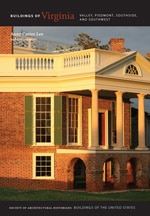
Roanoke's terminal exemplifies how airports have become venues for lively design that planners of civic and office buildings in the same small cities often find too frightening to consider. The Y-shaped terminal has two front arms, one each for arrivals and departures, stretching out to welcome auto-borne passengers. A formally planted promenade through the parking lot establishes an axis punctuated by Albert Paley's steel sculpture Aurora (1990). The axis extends through the entrance and up to departure gates. External triangular-trussed piers carry walls of blue-tinted reflecting glass with aluminum mullions at the front, and ceiling girders of the same form inside. Interior brick walls are carried as fragments past the ends of the building to make reference to Roanoke's historic warehouses. Glass walls at each gate give dramatic views of arriving planes and the mountains beyond, with which the airport seems perfectly aligned.

